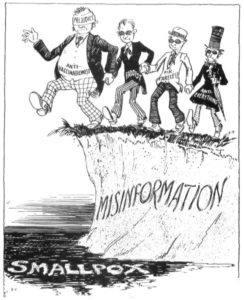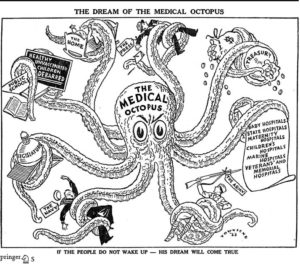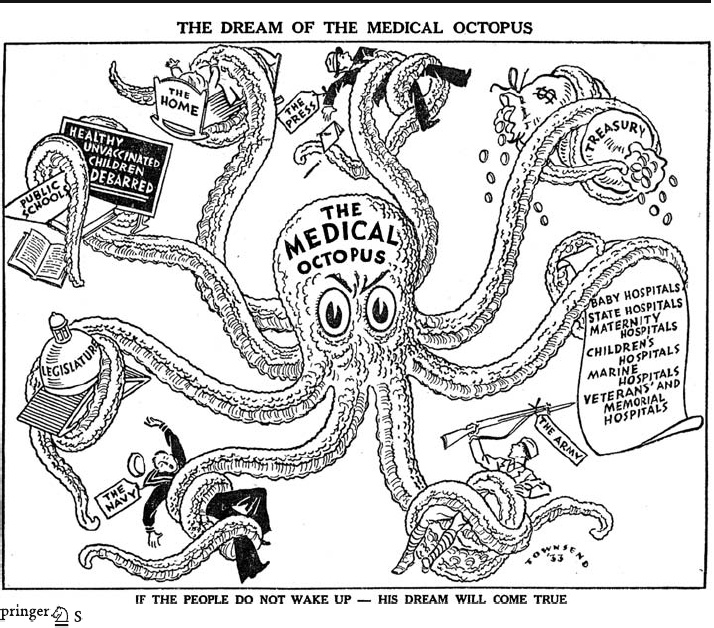One of the biggest challenges in writing Speak Truth to Fire was figuring out which historical events to include in the novel. I know some people think  that I just threw it all in there, but there was so much more I wanted to put in (the Tramway strike, in particular, was very hard to cut).
that I just threw it all in there, but there was so much more I wanted to put in (the Tramway strike, in particular, was very hard to cut).
I usually decided based on how well I thought it fit into the plot. The takedown of the Blonger gang, for example, helped strengthen the tie between my fictitious PI Stanley and the historical DA Philip Van Cise. It helped create the sense of large-scale manipulation of the city and highlighted the corruption of the era that was critical to the power of the Klan.
But my decision to include the smallpox epidemic came from my dismay at the growing anti-vax movement. As I was writing the novel, I saw how many people embraced the unscientific claims and conclusions of the anti-vax propaganda. It struck me as a powerful and relevant parallel to 1920s Denver, and perhaps just as important as the parallel between the current surge in racist politics and the rise of the Klan. Now with the current surge in measles cases around the country and the rallying of anti-vaxxers to the anti-Obamacare movement, it seems an even more important parallel.
Firsthand Experience with a Deadly Disease
It surprised me to learn that people were against vaccination for smallpox. I mean, I suppose there are always a few fringe people, but smallpox was really deadly, and the vaccine was pretty effective. Throughout the latter half of the 19th century, there were repeated outbreaks across the West, leading to numerous deaths. I thought that people who had witnessed these deaths would see the sense in vaccination.
But that wasn’t the case at all. Despite the lethality of the disease, there were many people who were against vaccination. In fact, a society called the Medical Liberty League placed advertisements in the newspapers, telling people that doctors were actually the cause of the problem, that vaccine injections would cause all manner of other diseases, and similar nonsense that we’re used to today.
Perhaps the biggest factor in the outbreak was that the city’s health manager William Sharpley was lackluster on vaccination. When the outbreak started in November 1921, he did not immediately mobilize against the disease, hoping that the outbreak would be small and would end in the spring. Voluntary vaccination, he felt, should be enough. As the outbreak continued and worsened through 1922, he was finally forced to call for help from the US Public Health Service, who instituted a more aggressive vaccination campaign, helping to bring the disease under control (Phil Goodstein, In the Shadow of the Klan p. 114). For his part, Sharpley claimed that voluntary vaccination surged after the newspaper reported on the dead. Even if that’s the case, it’s likely true that a more aggressive vaccination campaign in November 1921 could have saved hundreds of people.
In 1922, smallpox claimed 226 lives in Denver alone, with 30% of people who contracted the disease dying. Better than two-thirds of those who contracted the disease and three-quarters of those who died were unvaccinated. (The vaccinated who caught it and died had been vaccinated many years prior without boosters.) For comparison, in 1919 and 1920, an insurance company report lists only 181 deaths from all cities in the US and Canada, with a fatality rate of 10-15%. And it’s worth noting that a similar outbreak in Kansas City was squelched early on with a more aggressive stance on vaccination.
Vaccination Saves Lives
We are relatively lucky to live in a time with widespread access to vaccination. We have never had to grow up in a time when most people would have lost a sibling or child to a contagious disease. Let’s hope we can keep it that way.
But many people in the US are looking to bring back the pre-vaccination days, and they’re getting help here in Colorado, which already has the lowest national Kindergarten vaccination rates and recently failed to pass a bill to tighten the rules on vaccination exemptions. Let’s hope we don’t end up playing catch-up as we did in 1922.

